Fractal Antennae
According to the IEEE standard definition of the term: "the antenna or aerial is a means for radiating or receiving radio waves", in other words, the antenna is a metallic device which transmits and receives electromagnetic radiations from free space.
The miniaturization of electronic devices has led to the development of what is known as fractal antennas - miniaturized antennas that use an iterative function system to create a fractal element at a reduced size. The term "fractal" was first used by mathematician Benoit Mandelbrot in 1975. Mandelbrot based it on the Latin frāctus meaning "broken" or "fractured" and used it to extend the concept of theoretical fractional dimensions to geometric patterns in nature. One of the properties of fractals’ geometry is that it can have an infinite length while fitting in a finite volume. The radiation characteristic of any electromagnetic radiator depends on the electrical length of the structure. By using the property of fractal geometry in antenna design one can increase the electrical length, keeping the volume of the antenna the same.
The fractal concept can be used to reduce the antenna size such as in the case of the Koch dipole, Koch monopole, Koch loop, and Minkowski loop. Or, it can be used to achieve multiple bandwidths, and increase the bandwidth of each single band due to the self-similarity in the geometry, such as in the case of the Sierpinski triangle, Cantor slot patch, and fractal tree dipole.
The intention behind this art and science research project is to experiment with different conductive materials and techniques, from laser cutting to embroidery to create fractal antennas that can be later used as a hacking mechanism to sniff into hidden electromagnetic fields.
Experiments
The first experiments were conducted with laser cutting different iterations of the Sierpinski Triangle fractal on Copper Polyester Taffeta Fabric (later fused with adhesive interfacing on white scuba fabric). One of the major challenges faced while cutting the fabric in shapes beyond the third iteration, was that even if the size of the fractal was scaled to a somewhat bigger surface, the fabric became very fragile in between the triangle connections.
Similarly, the experimentation continued laser cutting conductive fabrics - Copper Polyester Taffeta and SaniSilver, using with the Hilbert Curve fractal - a space-filling geometry. Both the Sierpinski and the Hilbert fractal shapes were created algorithmically, using open-source Processing code.
The code can be found here: https://github.com/afrdt/Fractal-Antennae
The 5th iteration of the Hilbert Curve was used to create a wearable prototype which connects to an amplifier that permits for the antenna to pick up interference and radio signals within a specific range.
The exact range can be defined using a network analyzer - for a review of the measurements done at the University of Washington Reynolds Lab refer to: https://www.dx-softlab.com/blog/2018/6/28/measuring-wearable-antennas-with-vna
Another method approached for creating a textile fractal antenna was cross stitch hand embroidery to create a Minkowski fractal. The challenge faced in this stage was how to sew the back of the fabric in a manner that the thread would create a consistent fractal pattern. Although aesthetically interesting, functionally experimentation should continue using other type of stitches that allow the embroidery thread to be always on the same side of the fabric (eg. couch stitch).
During the Tribe Against Machine summercamp in Taiwan with the Atayal tribe, I experimented with using an industrial embroidery machine that was available at the Liang Studio to produce the Hilbert curve fractal. While the thickness of the specific thread cause some issues (as a couple of times it broke and we had to connect it again), the tests were successful and the results were rewarding as these embroidered fractals are pretty robust.
The {Fractal Kimono}
The above described research into fractal antennas was implemented into the creation of an electromagnetic field sensing kimono made of indigo denim fabric. The inspiration for this project can be found in traditional Japanese embroidery and especially a technique known as Sashiko (刺し子, literally "little stabs") - a form of decorative reinforcement stitching. Sashiko patterns resemble mathematical fractal shapes and were used especially in kimono garments to reinforce worn fabrics.
The laser cut copper taffeta Hilbert space-filling curve antenna that is embedded at the back of the garment connects to a simple amplifier and a headphone jack and is used in electromagnetic sound walks to perceive the invisible surroundings.
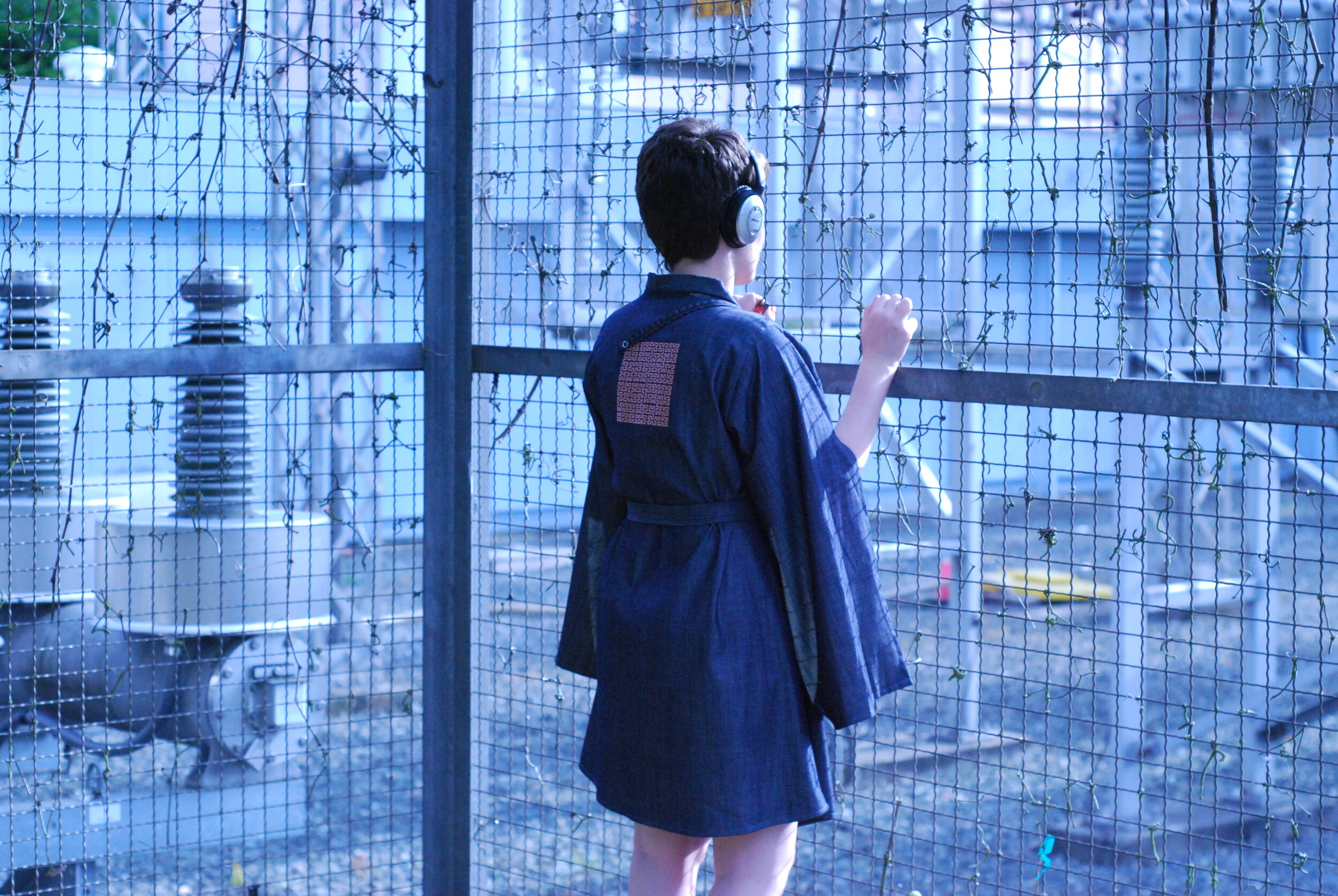
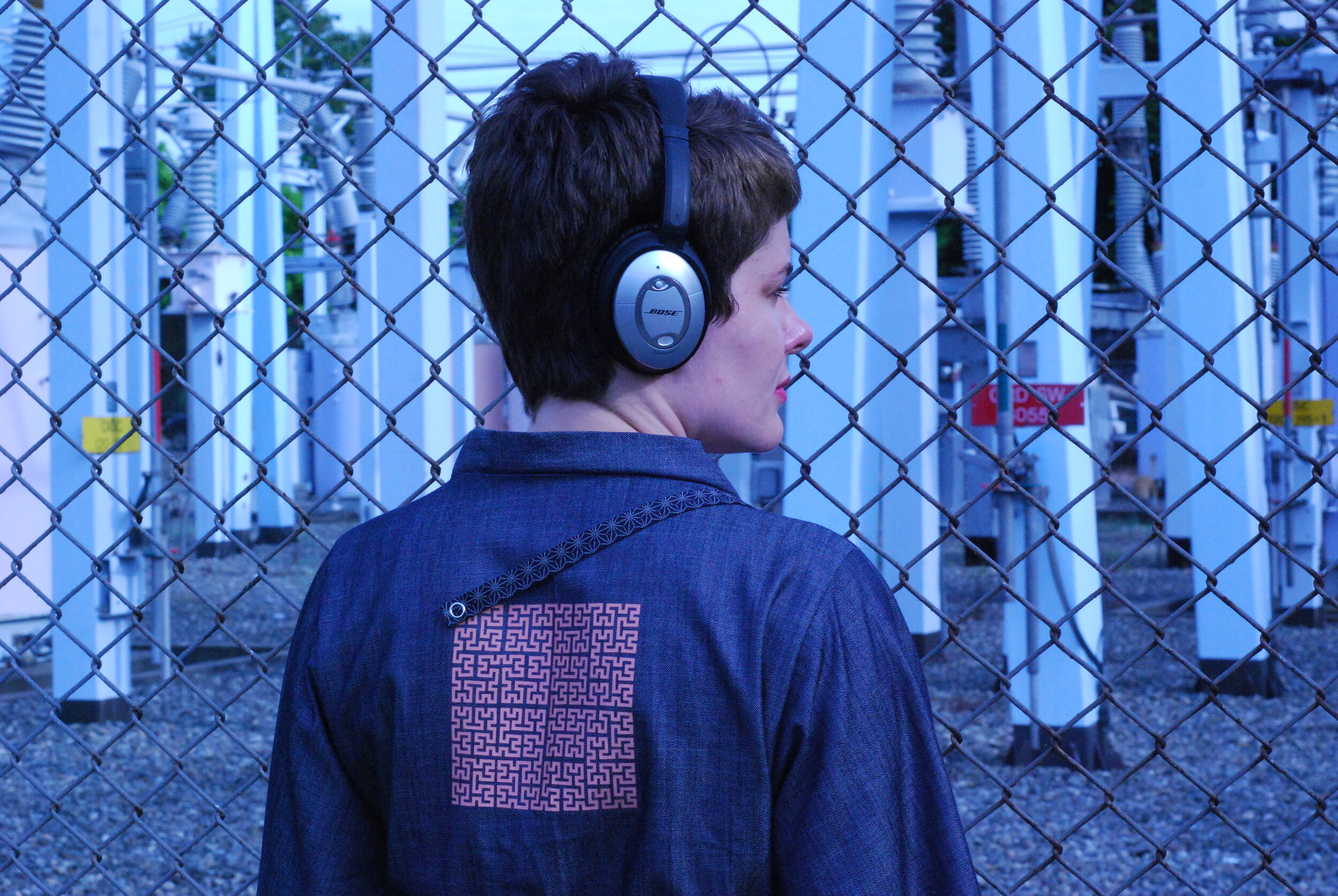
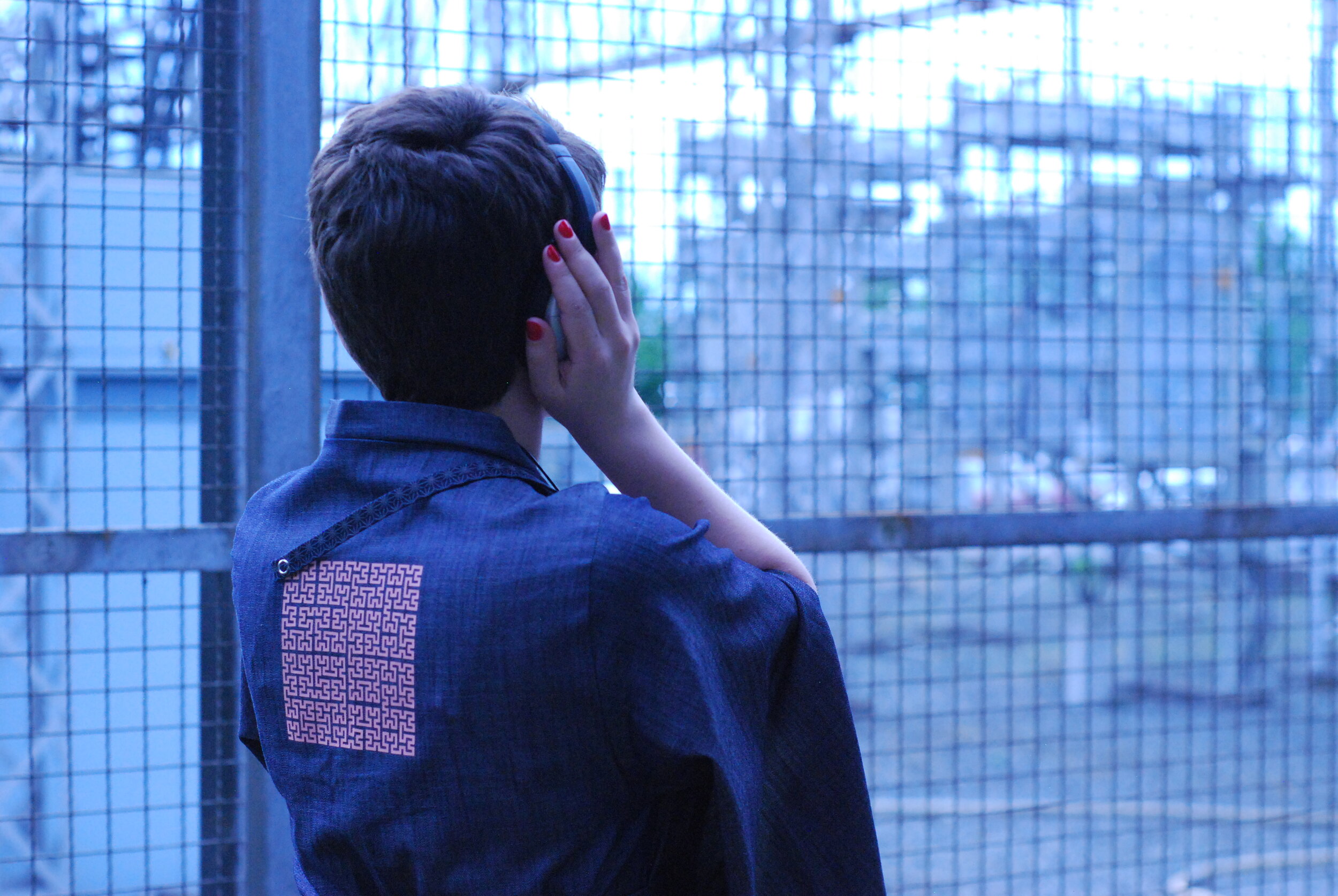

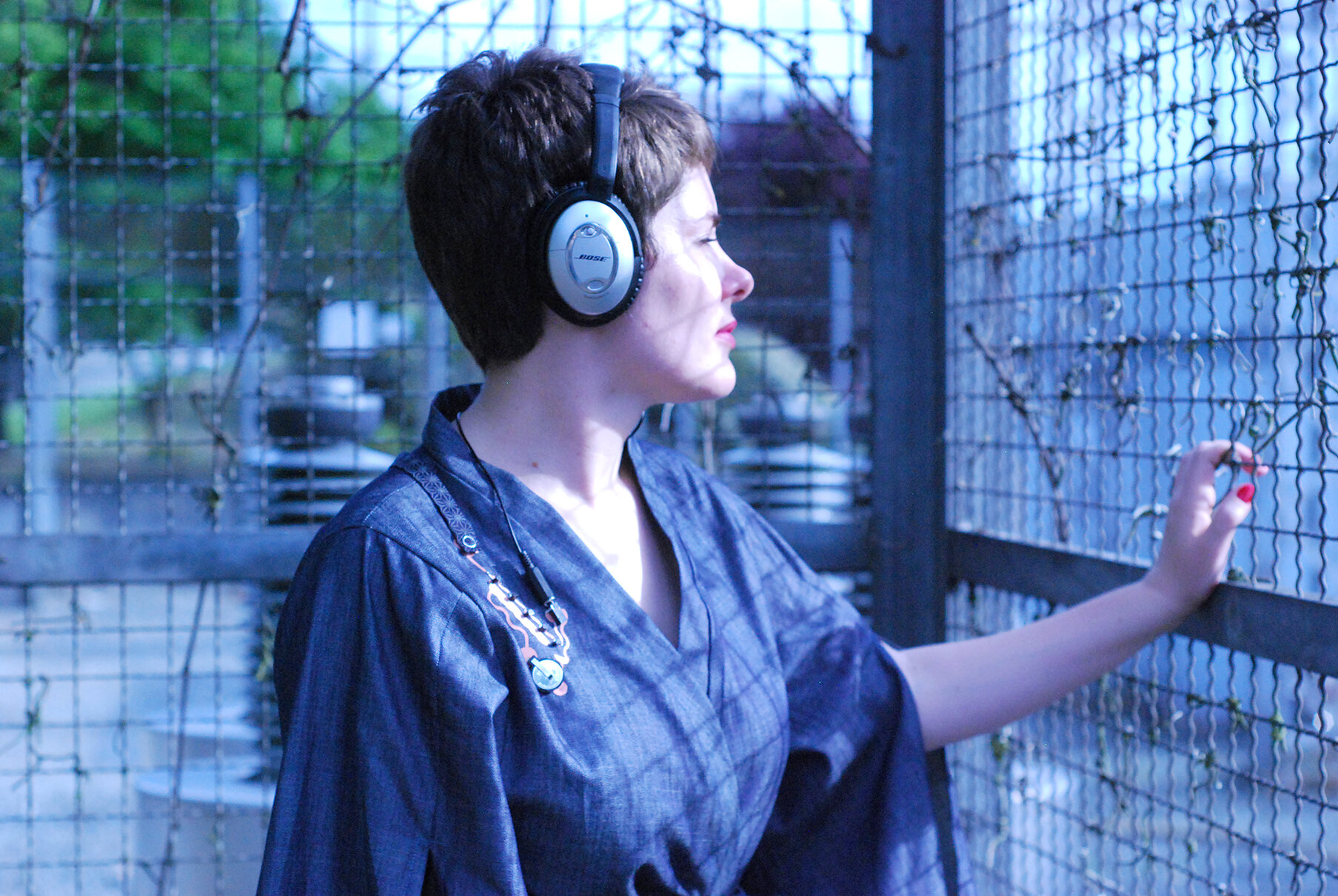

Workshops
Workshops conducted in the context of this project were essential to probing the limitations of the soft circuitry, as well as to help in the iteration and the creation of more powerful amplifiers. These workshops that were conducted in 2017 and 2018 in Seattle, Minneapolis, San Franscisco, Washington D.C., Mexico City, Taipei and Ljubljana offered an opportunity to both disseminate the project, but also to experiment with different antenna designs and placements, and ultimately expose the participants to the experience of an electromagnetic sound walk as an embodied practice.

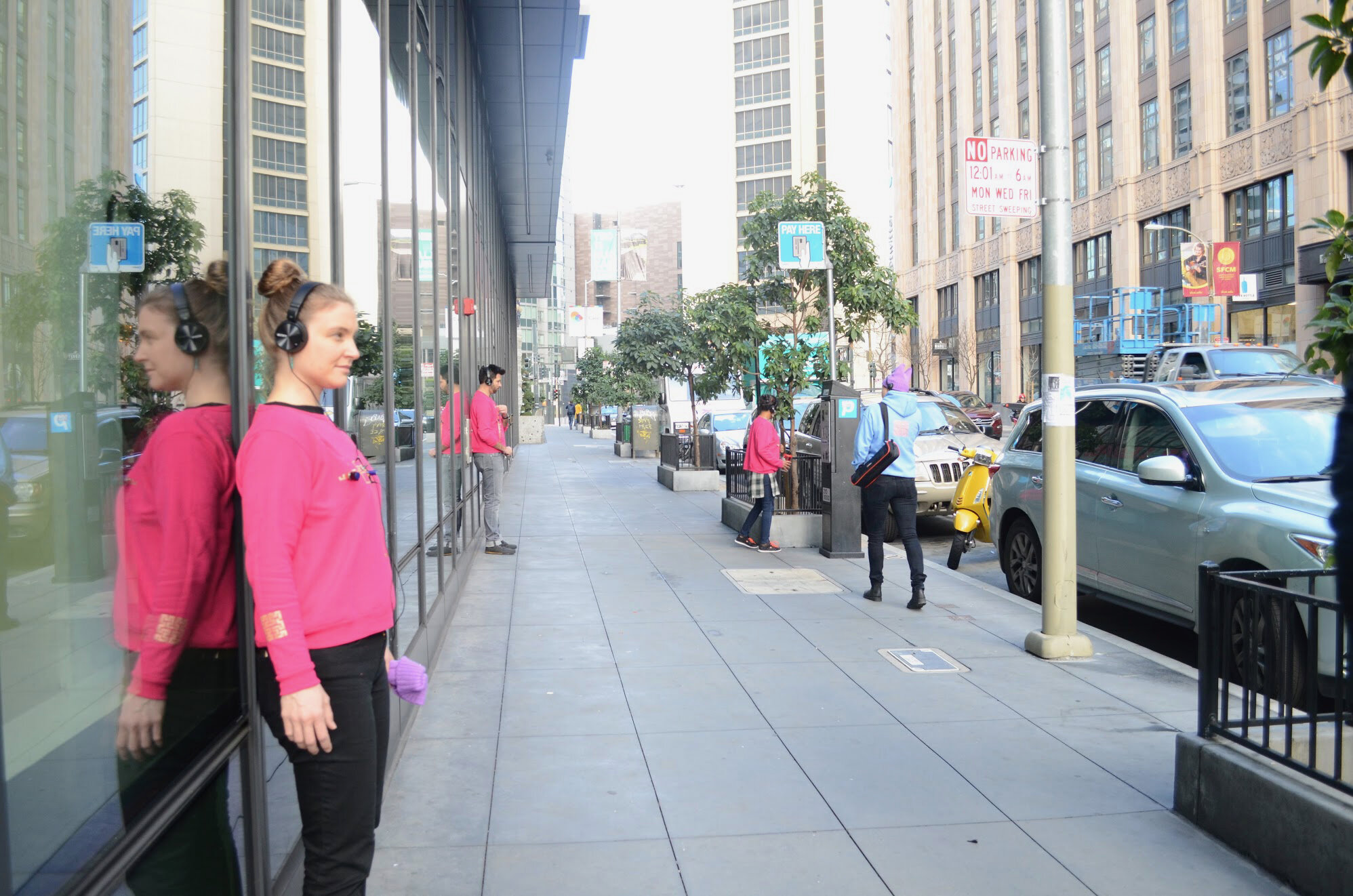
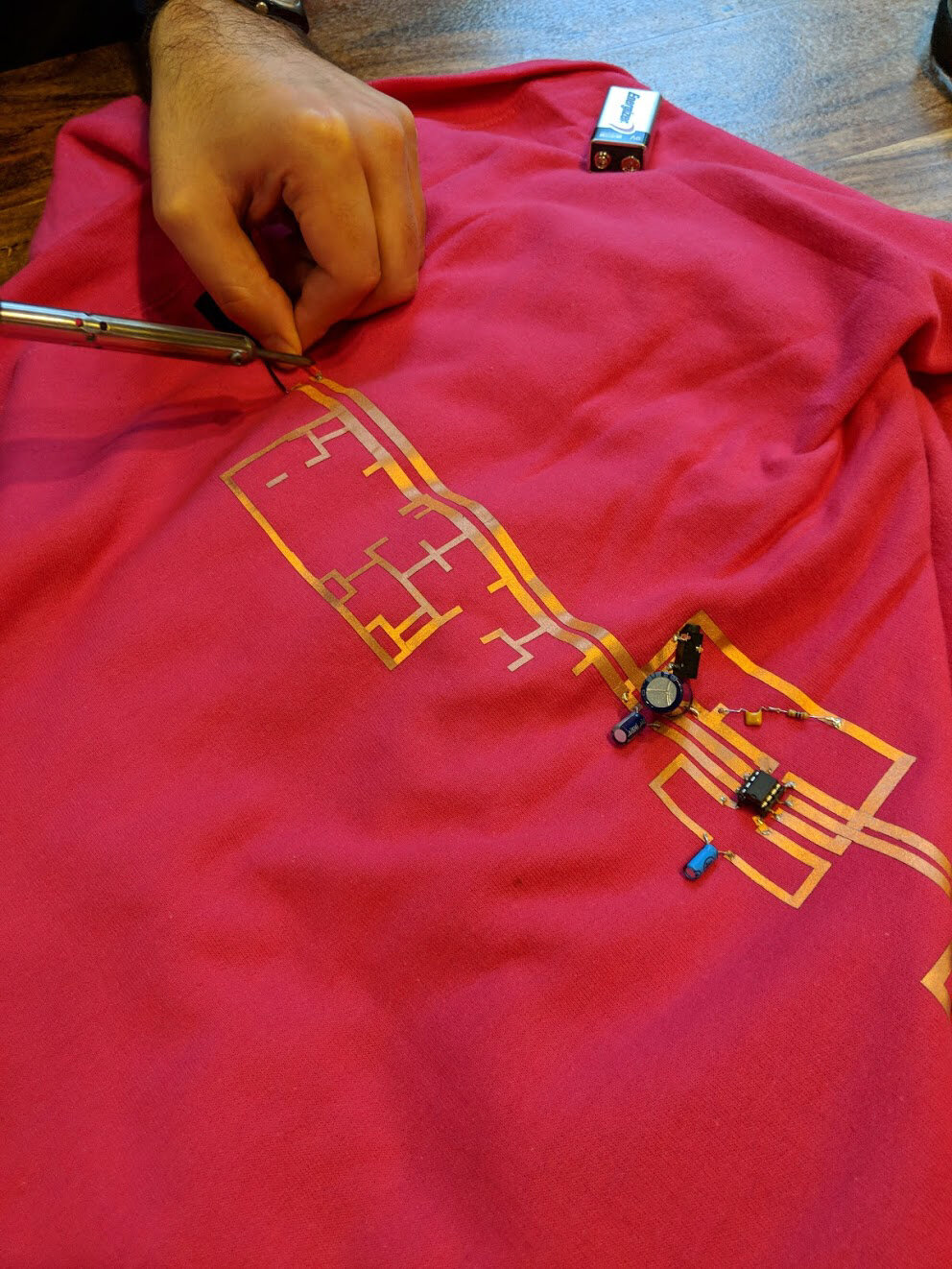
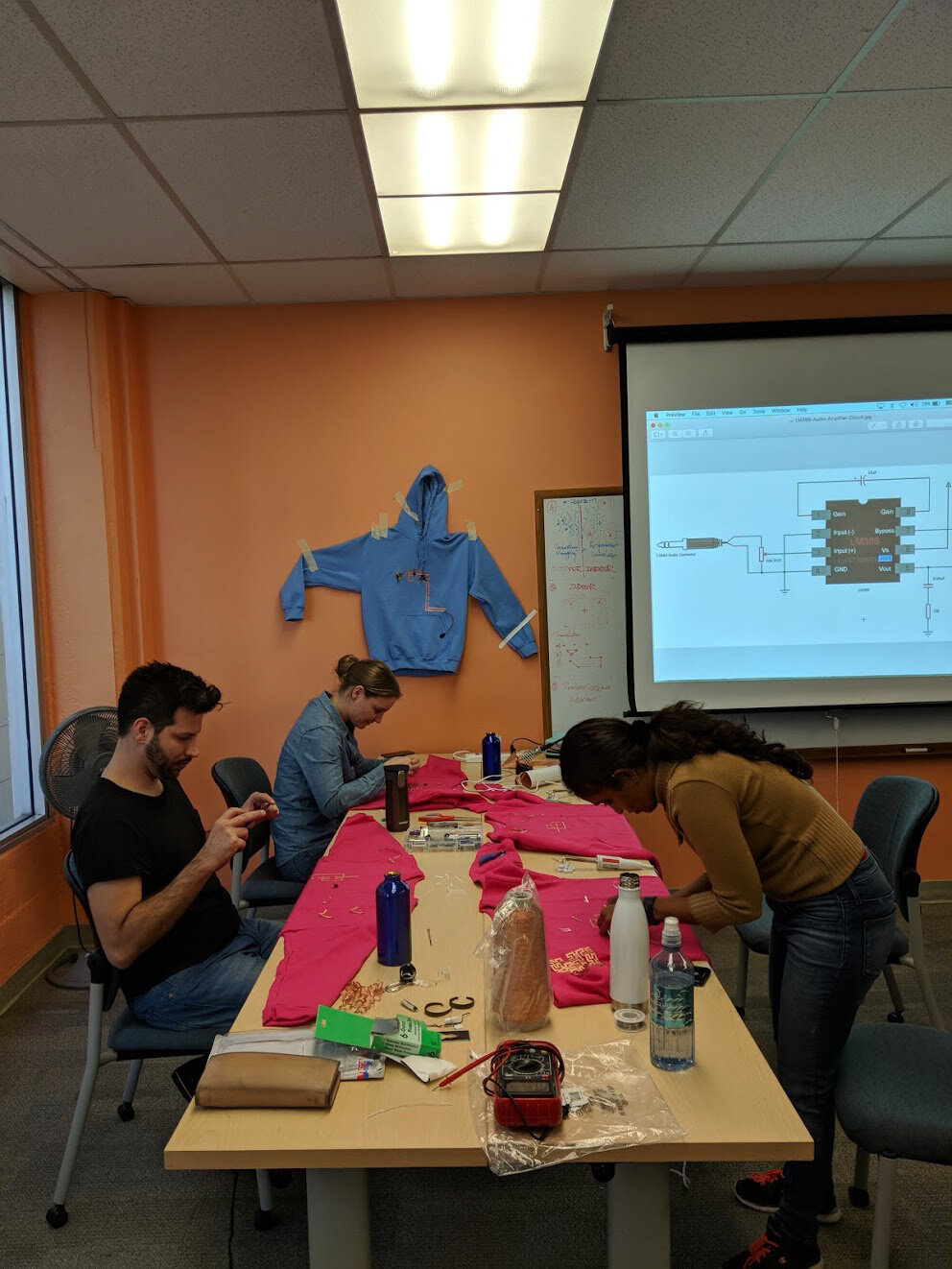
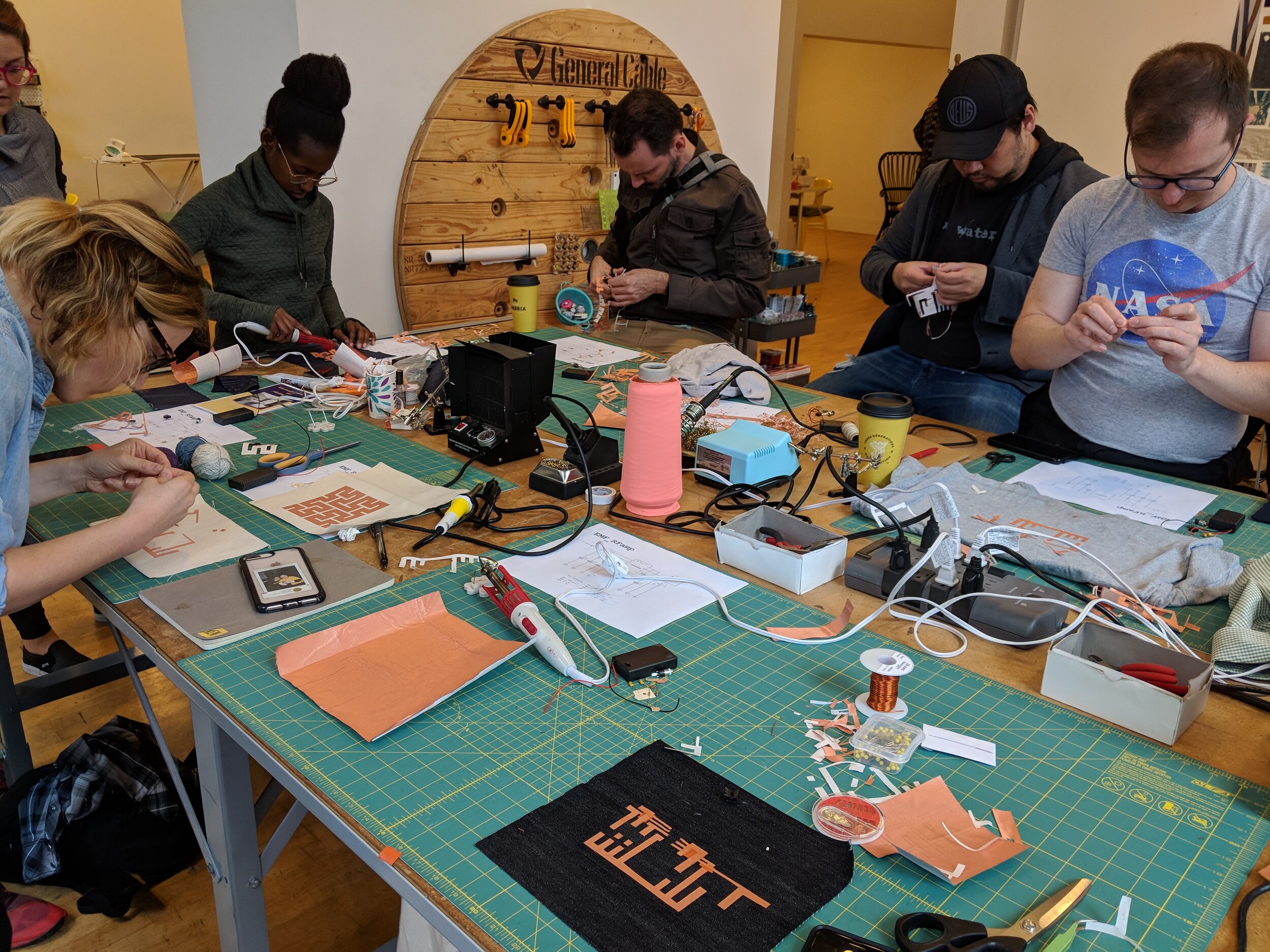

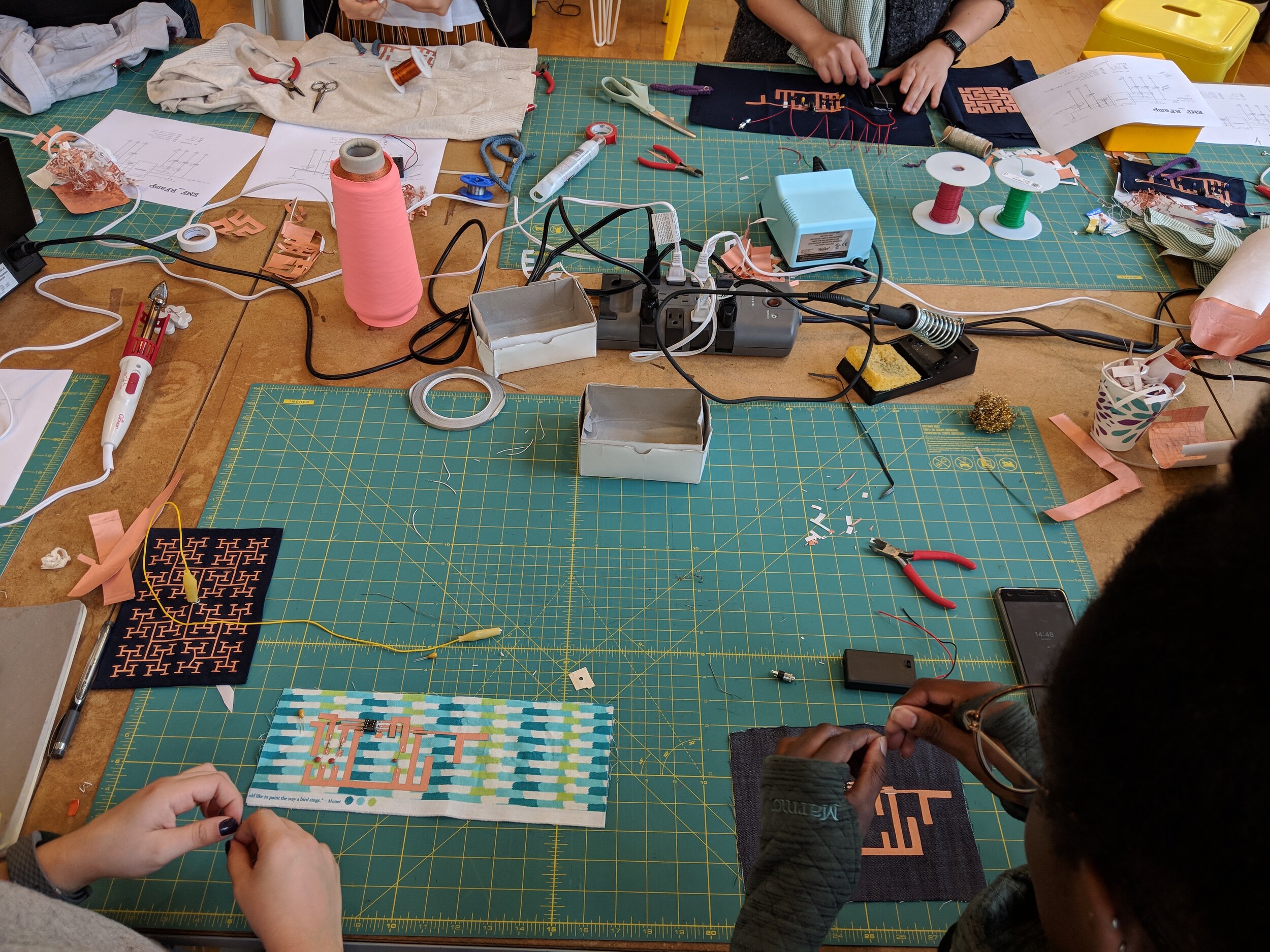
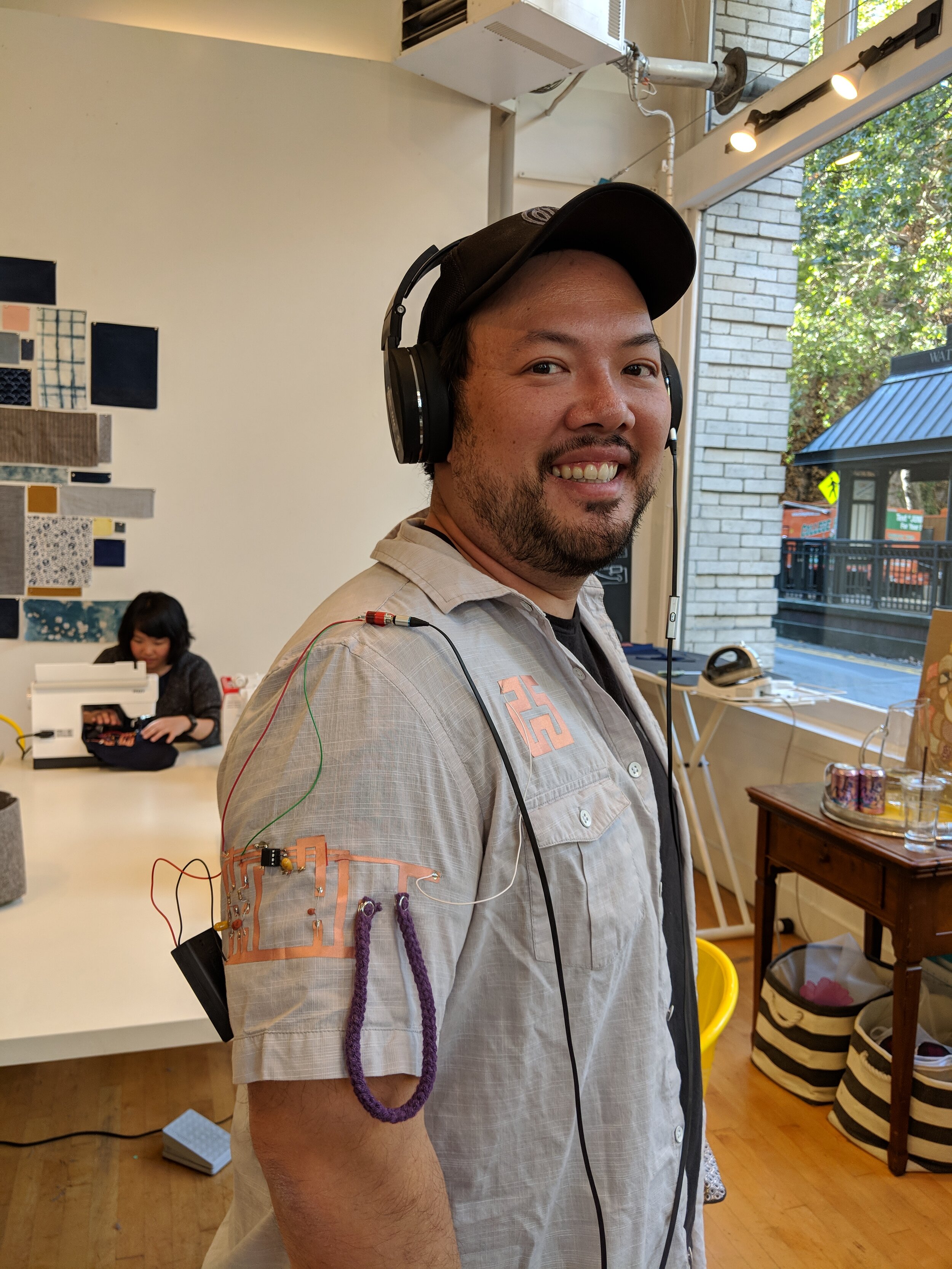

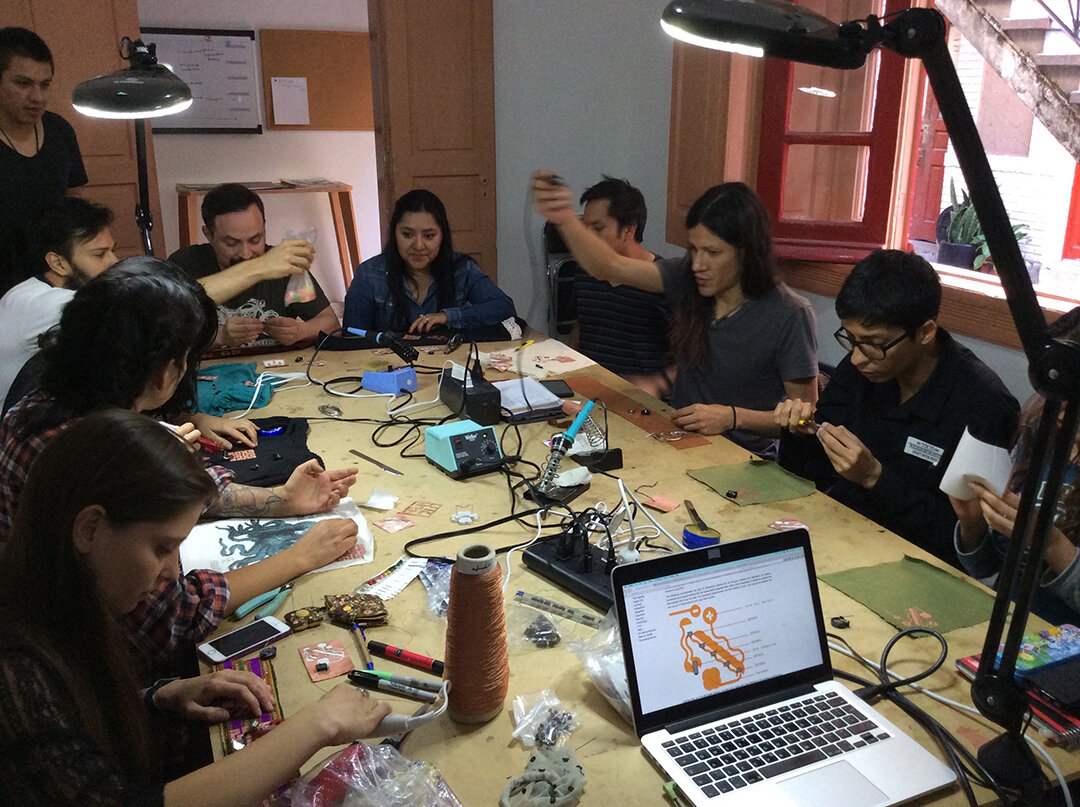

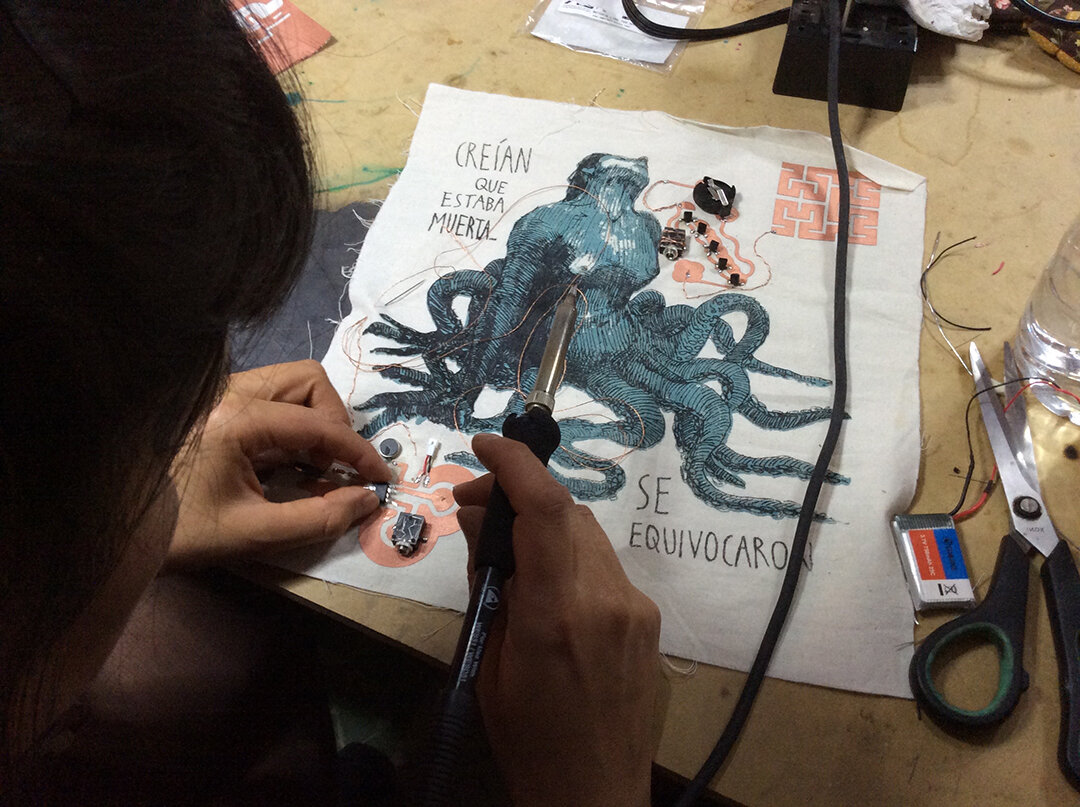


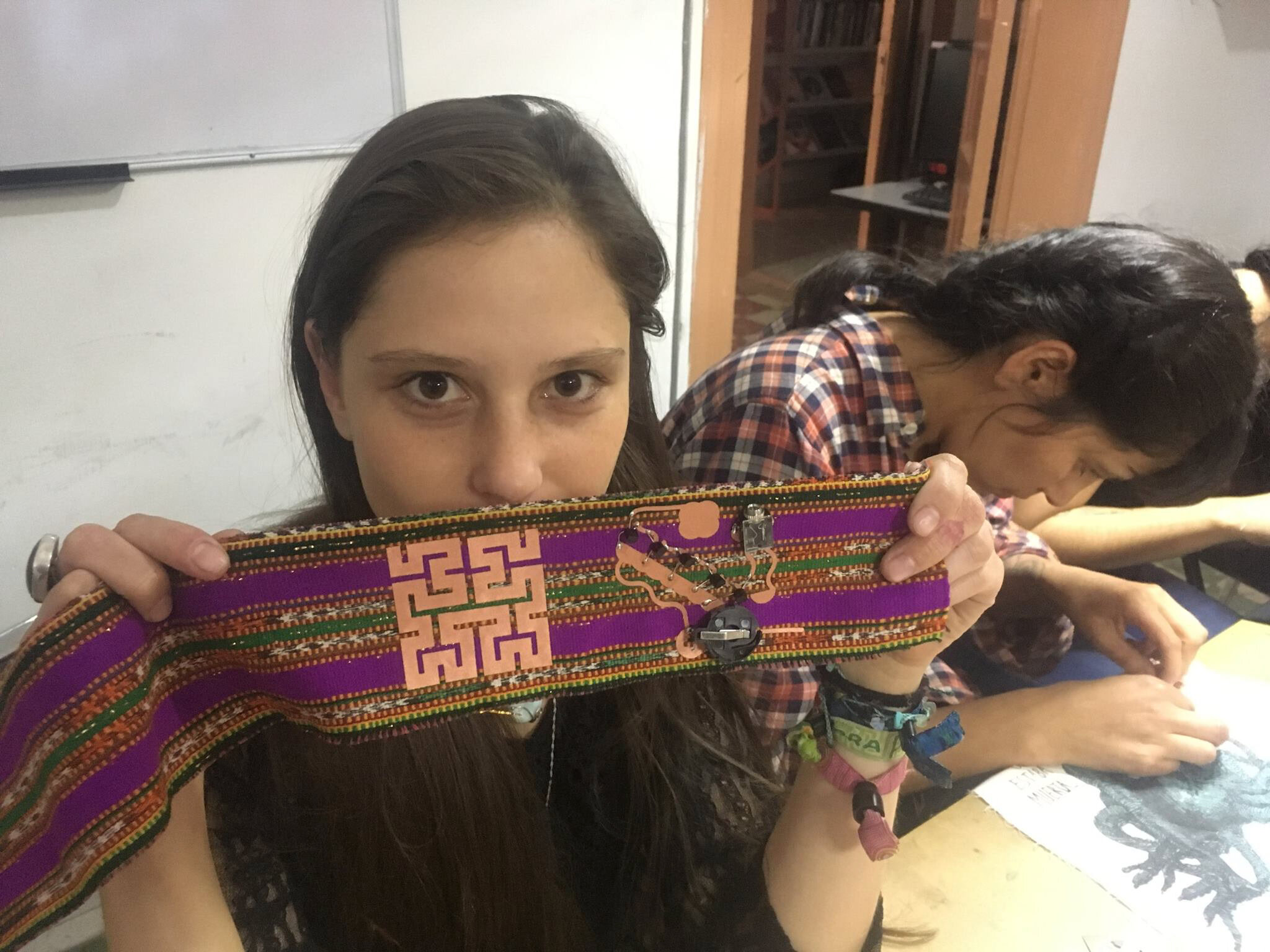
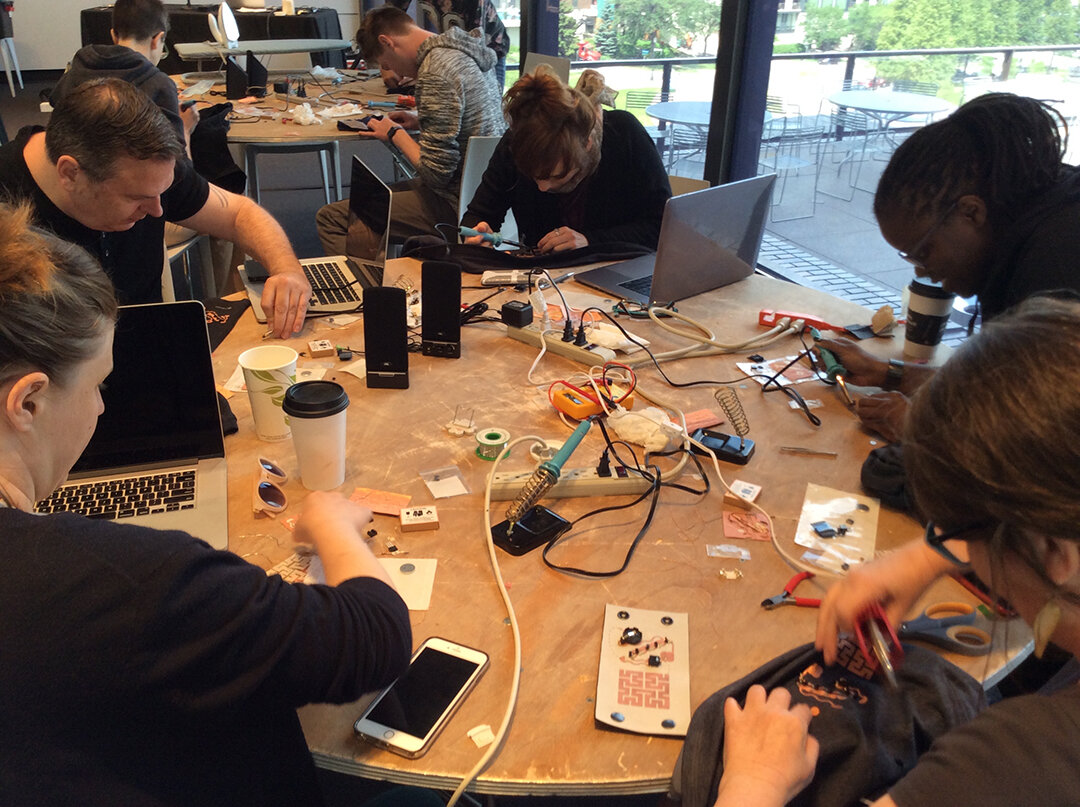
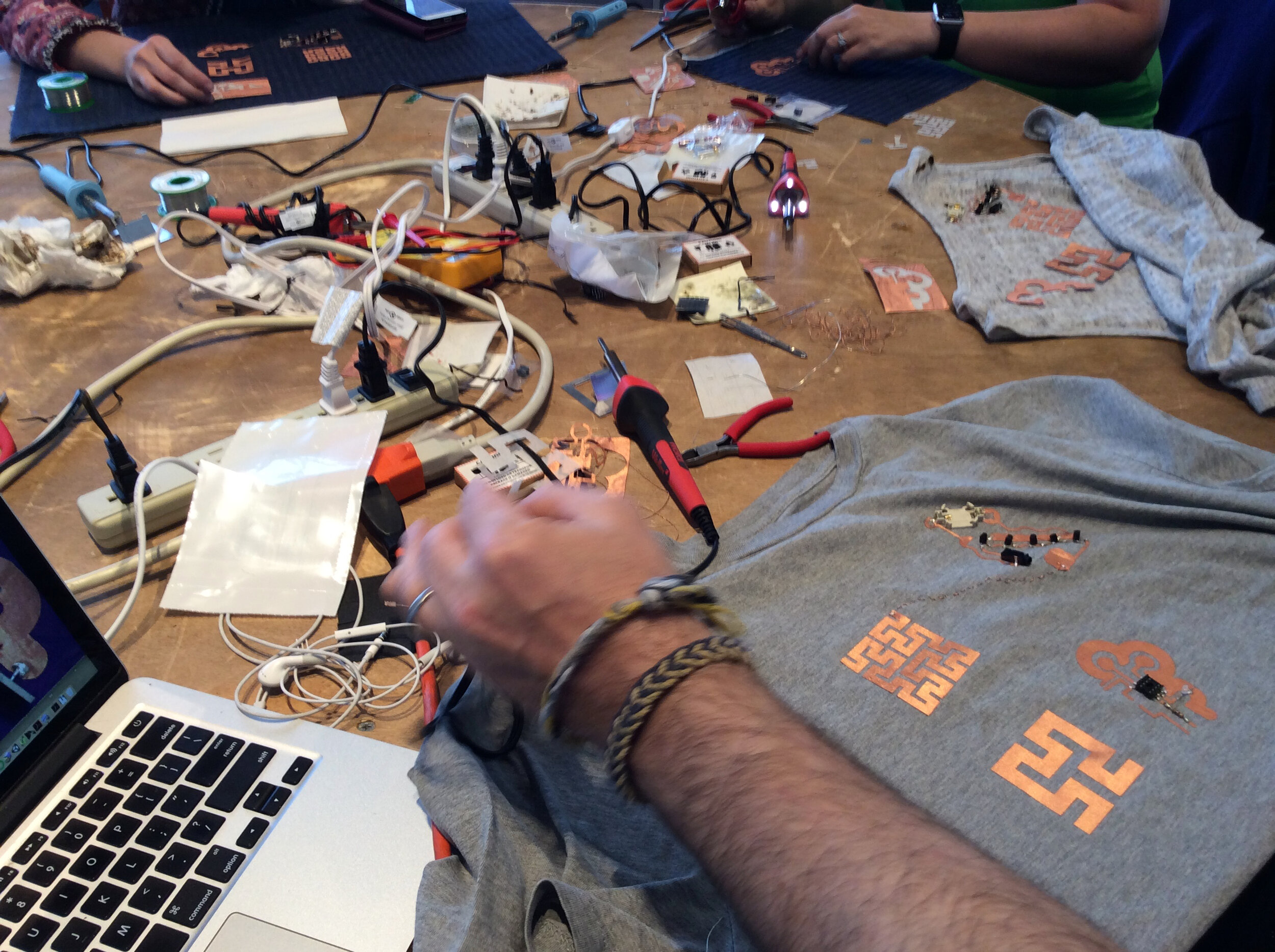
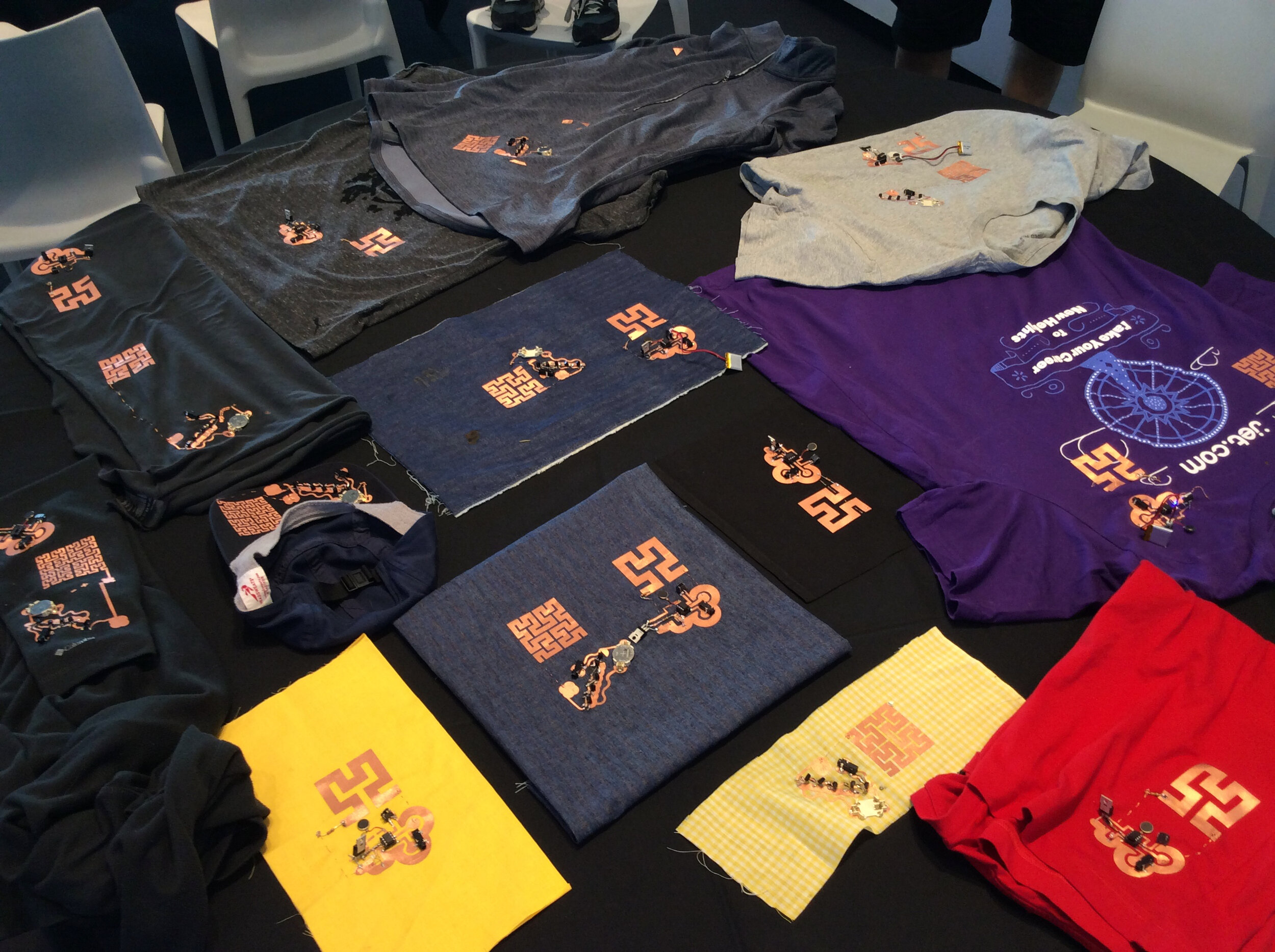
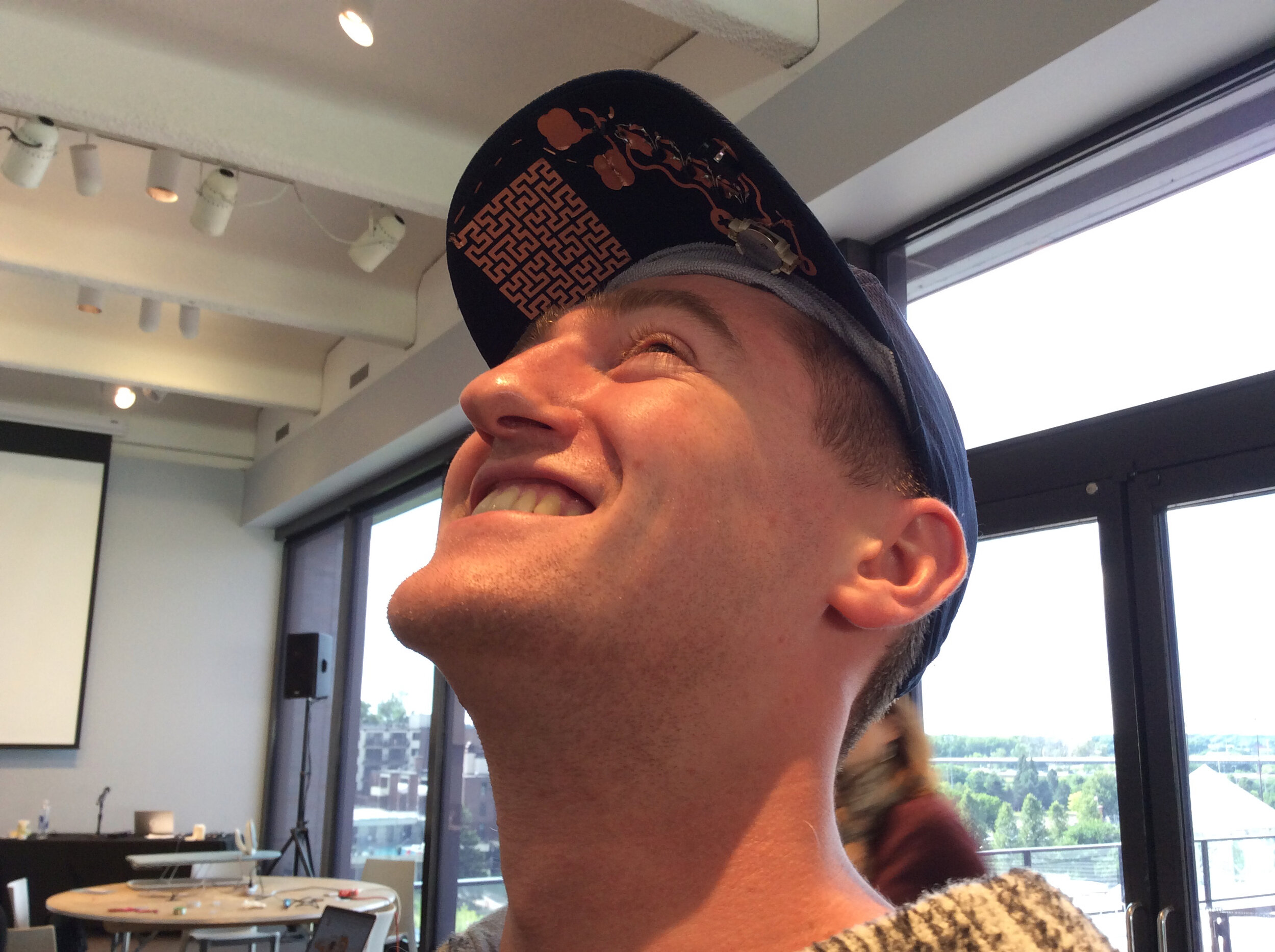
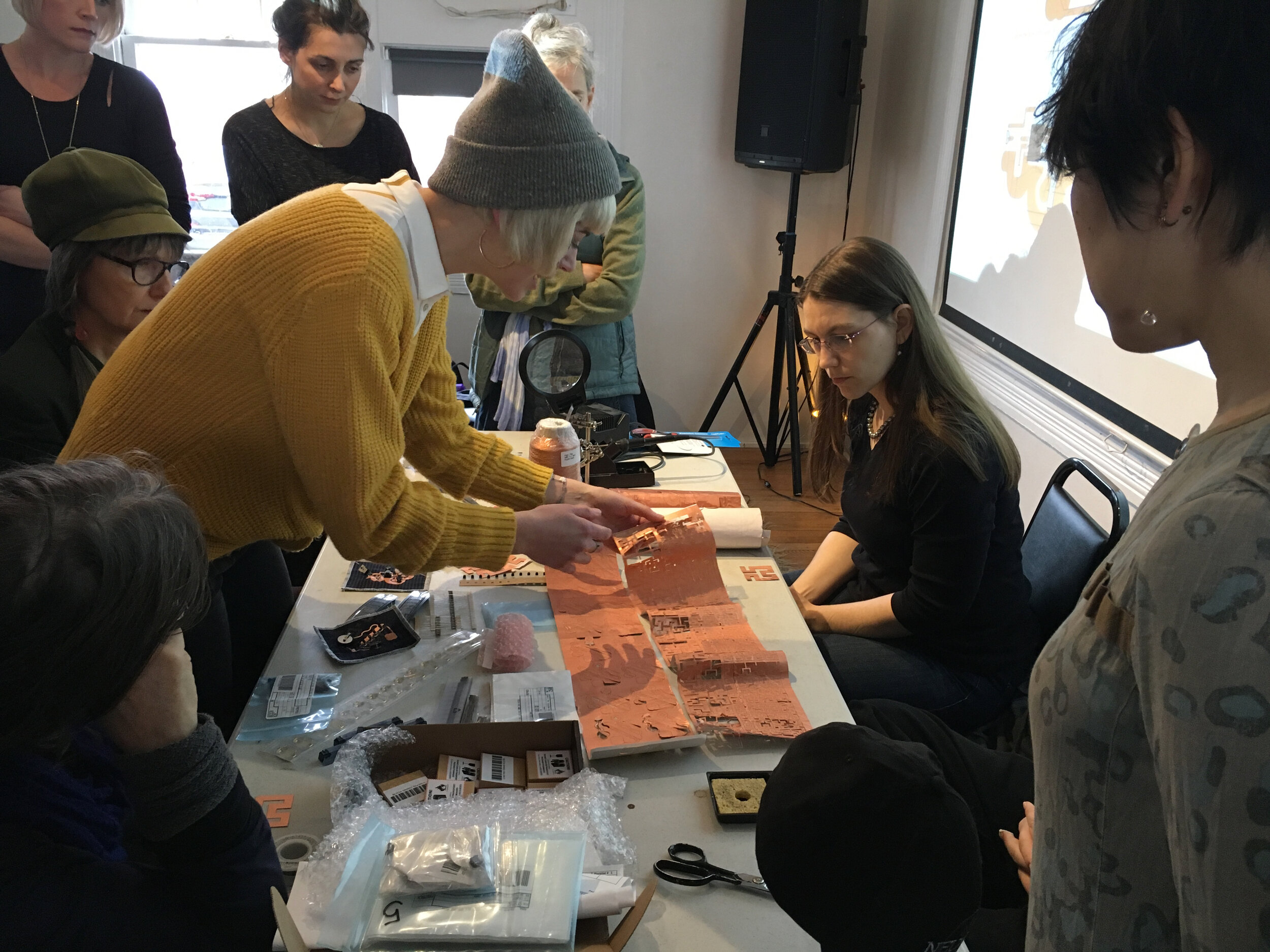
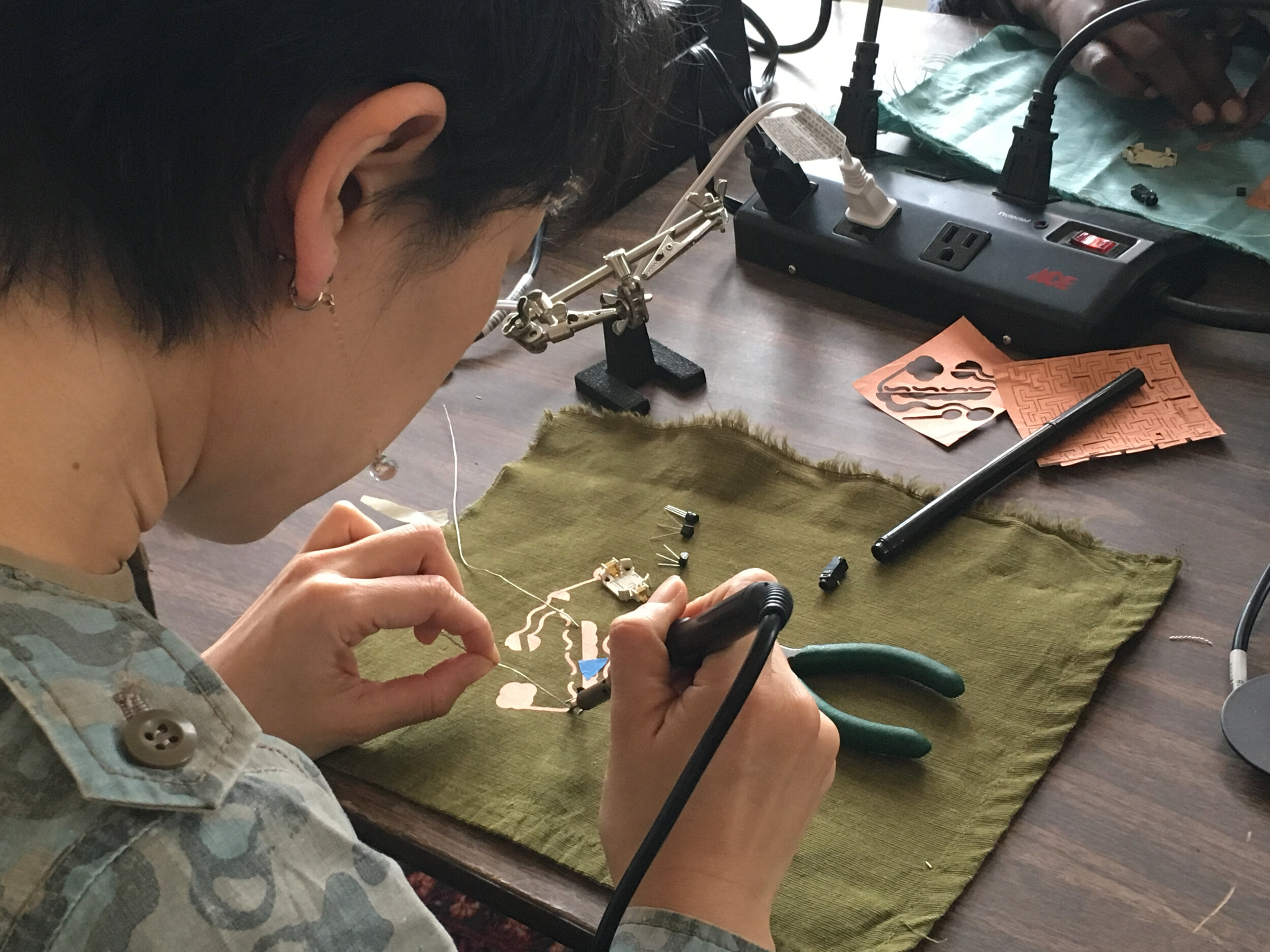
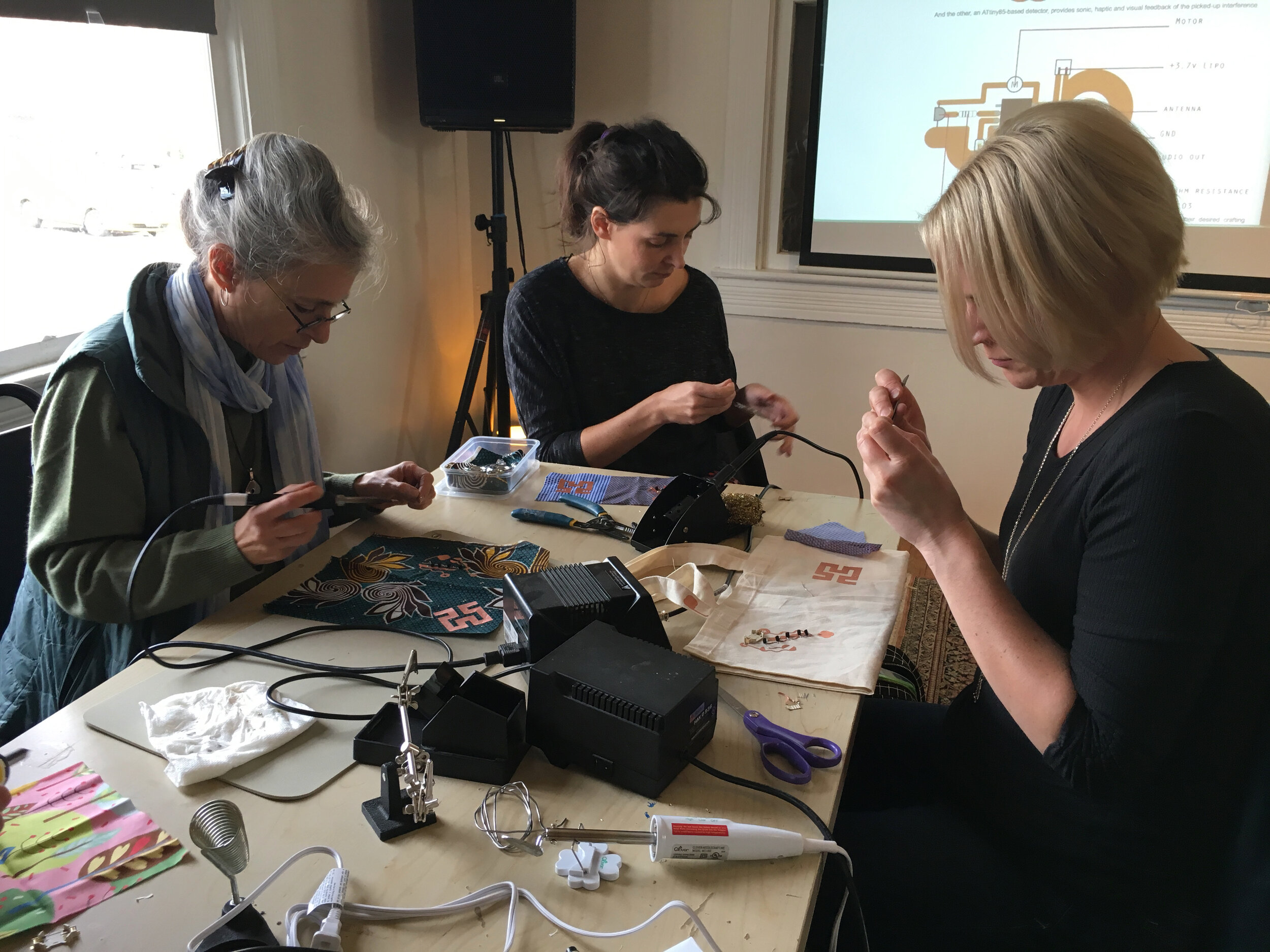

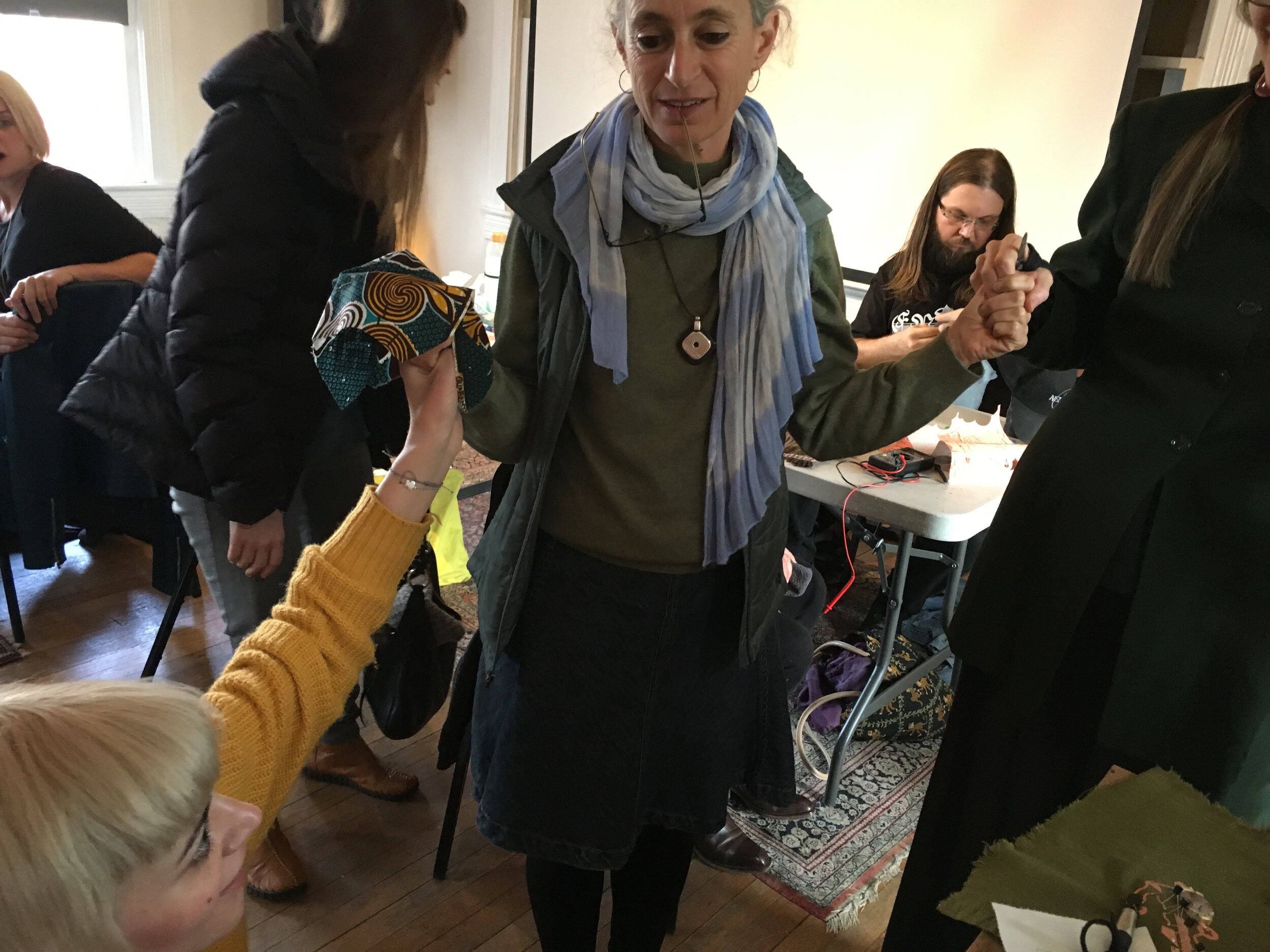

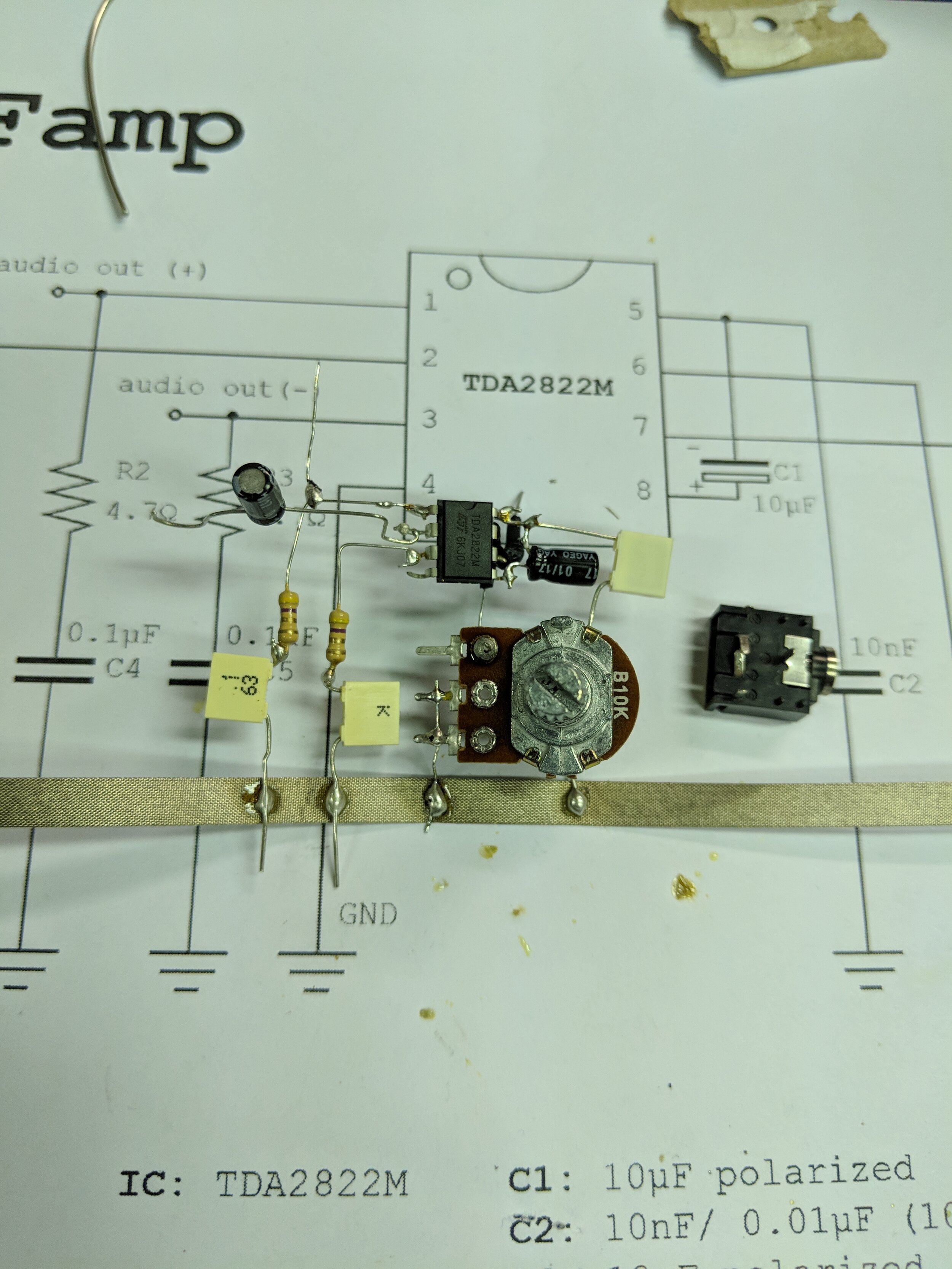
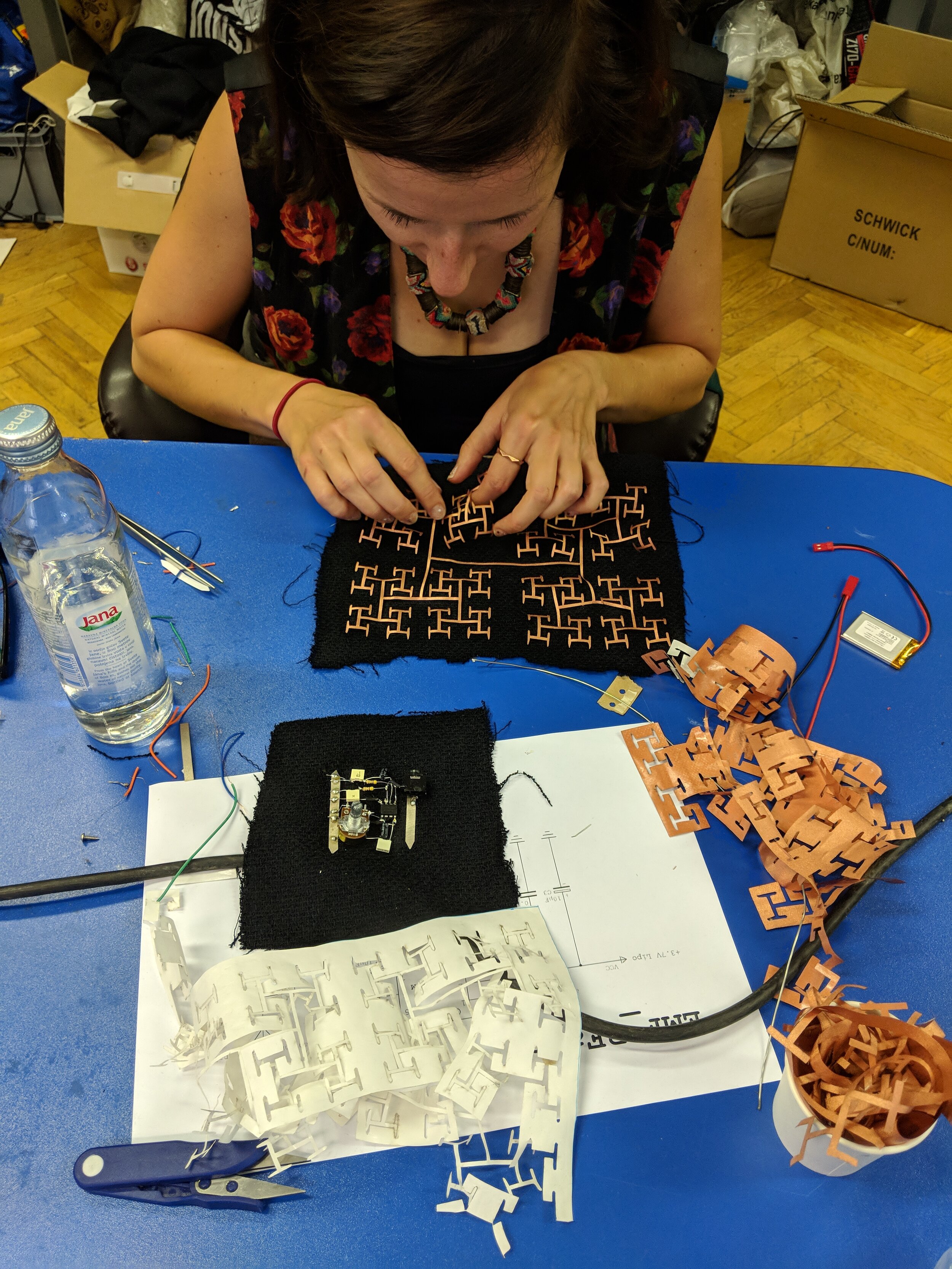
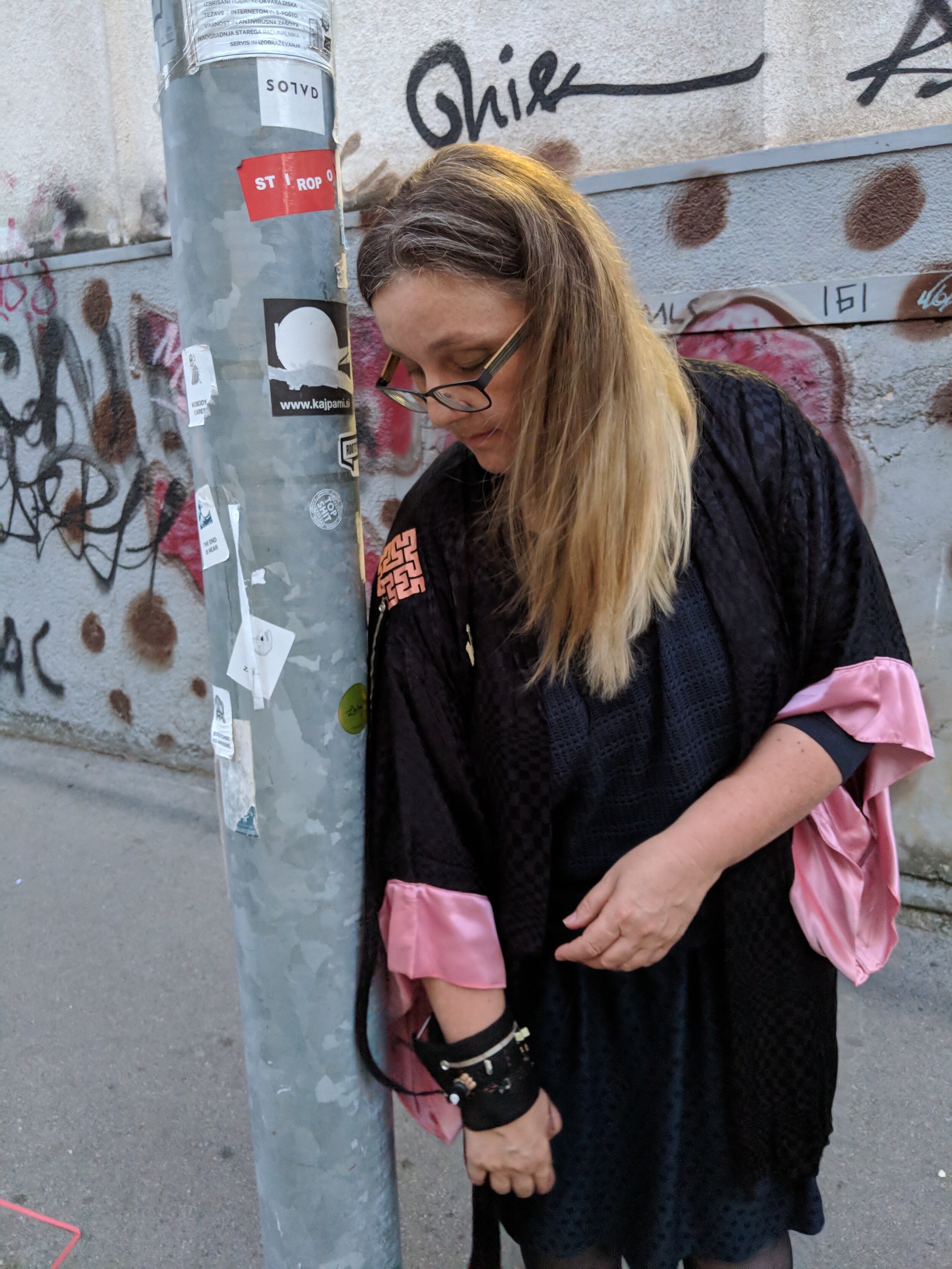
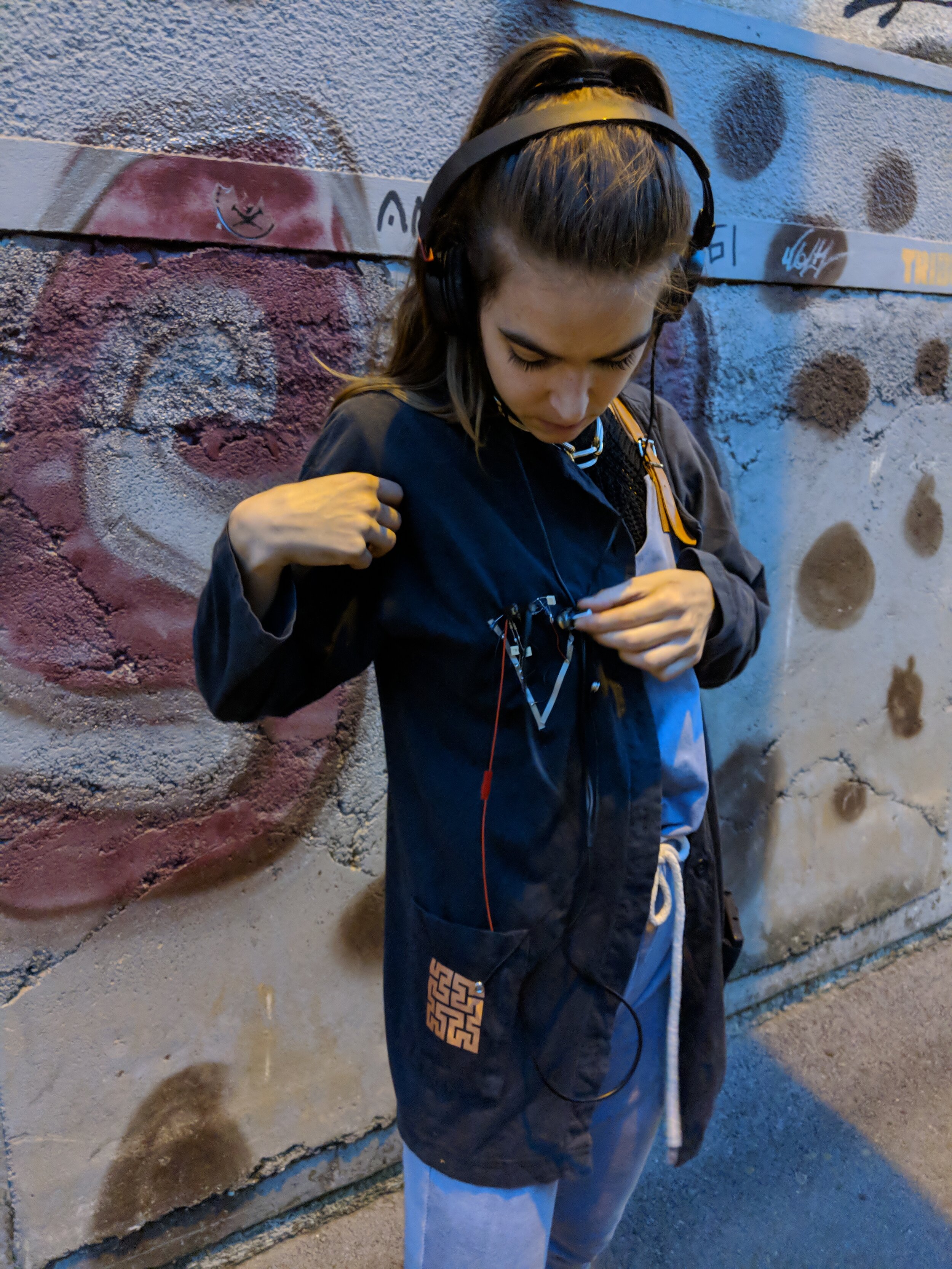
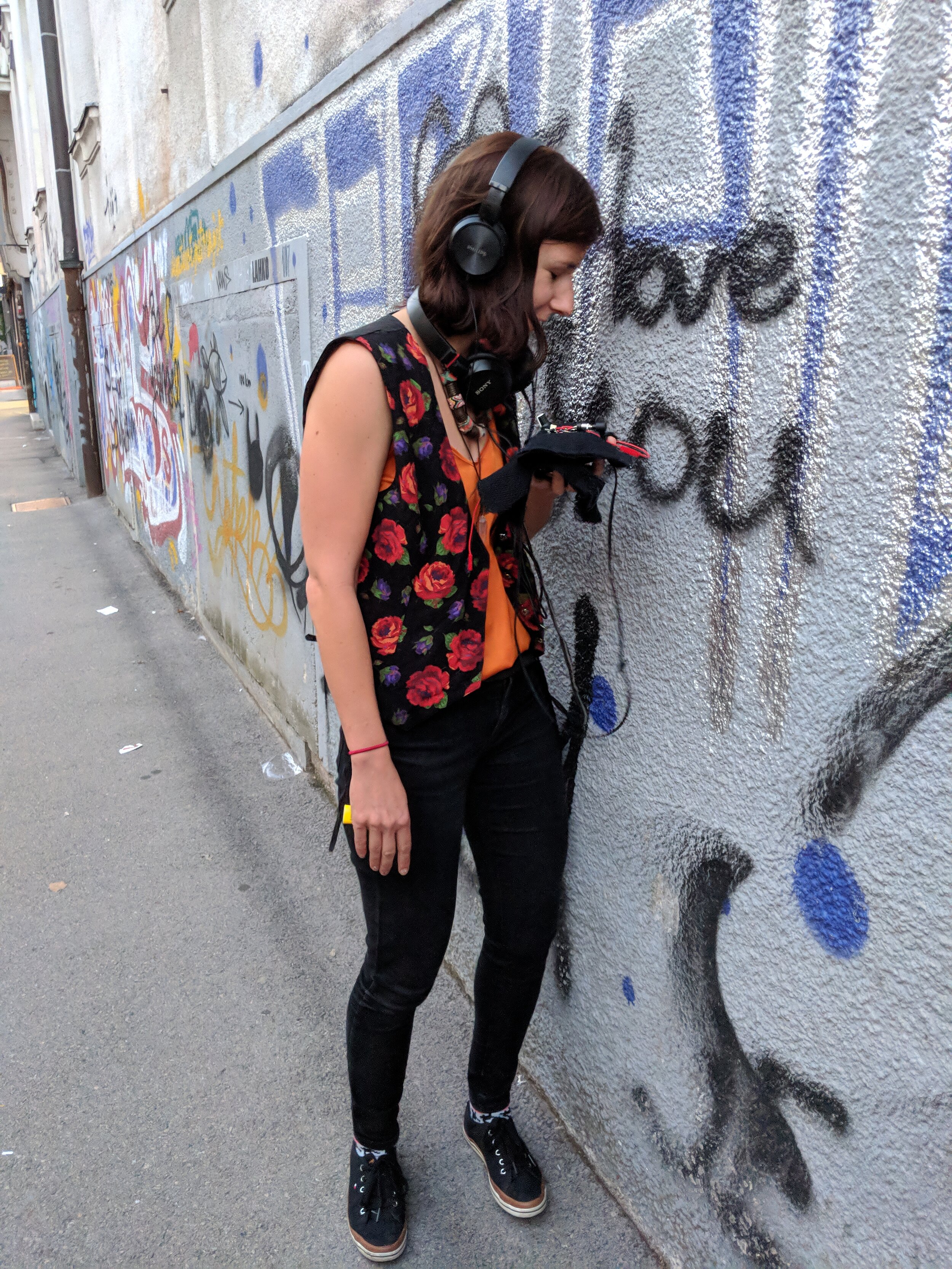
Exhibitions
2018
Attempts, Failures, Trials & Errors Salon de Proiecte, Bucharest & Kibla Multimedia Centre, Maribor, Slovenia. Curated by Tincuta Heinzel.
eTextile Spring Break at The Wassaic Project in New York, US.
2017
Tribe Against Machine, Red Room TAF Taipei, Taiwan.
Publications
Psarra, Afroditi. 2020. H-Fractal machine embroidered antenna swatch. Published in “HFF 2020”, edited by Wei-Chieh, Shih. Funded and pertaining to the collection of the National Taiwanese Craft Research and Development Institute (NTCRI). Self-published, limited edition of 16 copies.
Artist Talks
E-textiles: Hand-Crafting Technological Artifacts artist talk at Eyeo festival, Walker Art Center, Minneapolis, MI, US.
Illustrating Dynamics and Probability keynote and Art & Math panel discussion, Institute for Computational and Experimental Research in Mathematics (ICERM), Brown University, Rhode Island, US.
Residencies
2018
eTextile Spring Break at The Wassaic Project in New York, US.
Related Workshops
2018
Wearable EMF and RF sensing workshop at Drygoods Design as part of the Seattle Design Festival, US.
Wearable Fractal Antennae workshop at RAMPA Lab in Ljubljana, Slovenia.
ICAS (International Symposium of Artists Scholars) conference at California Institute for Integral Studies in San Francisco, US.
2017
Fractal Antennas workshop at Rhizome D.C., US.
EMF Sensing & Fractal Antennas workshop with Martin DeBie and Claire Williams at the Tribe Against Machine summer camp in Miaoli, Taiwan.
EMF Sensing & Fractal Antennas workshop at Eyeo festival, Walker Art Center, Minneapolis, MI.
Antennae Bodies and EMF fields workshop at Medialab MX, in Mexico City.



